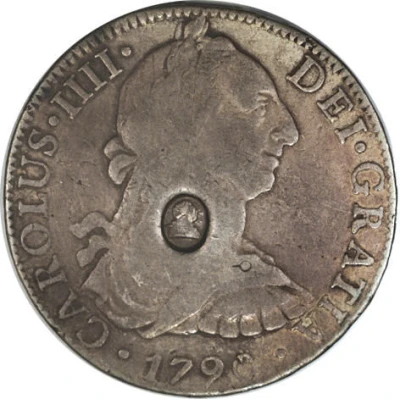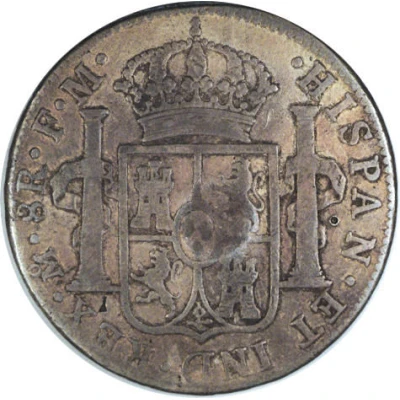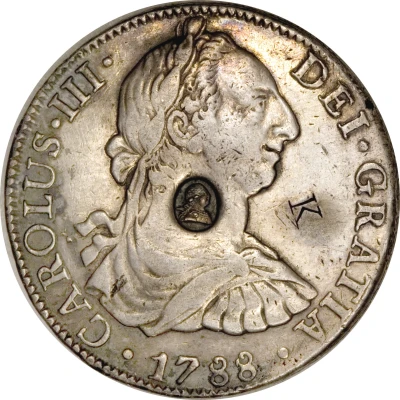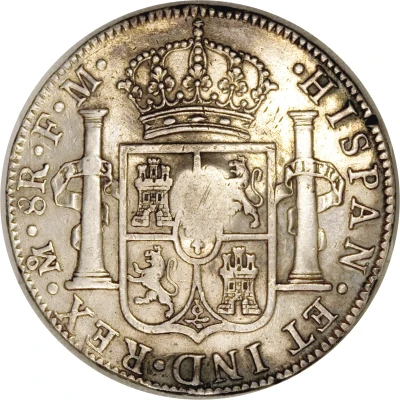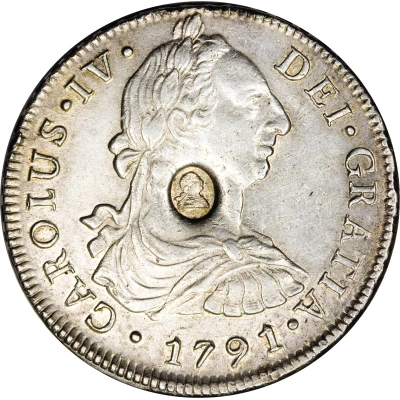
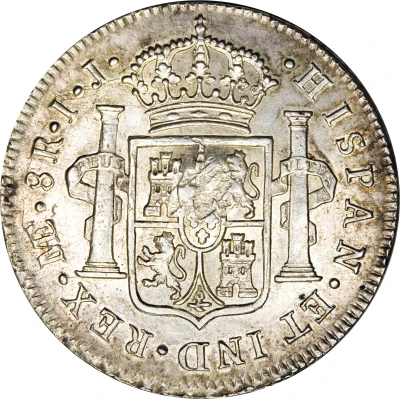

© Heritage Auctions
1 Dollar - George III Type I countermark; oval
| Silver (.896) | 27.0674 g | 40 mm |
| Issuer | United Kingdom (United Kingdom, British Overseas Territories and Crown Dependencies) |
|---|---|
| King | George III (1760-1820) |
| Type | Standard circulation coin |
| Years | 1789-1791 |
| Value | 1 Dollar = 4 Shillings 9 Pence (19⁄80) |
| Currency | Countermarked coinage (1797-1804) |
| Composition | Silver (.896) |
| Weight | 27.0674 g |
| Diameter | 40 mm |
| Shape | Round |
| Demonetized | Yes |
| Updated | 2024-10-09 |
| Numista | N#27974 |
|---|---|
| Rarity index | 93% |
Reverse
Crowned quartered shield of arms dividing denomination, legend around.
Script: Latin
Lettering: ·HISPAN·ET IND·REX· LIMAE · 8R ·I·J·
Translation: King of Spain and the Indies
Comment
Countermarked Coinage (1797-1804)Emergency issue consisting of foreign silver coins, usually Spanish Colonial, having a bust of George III within an oval (1797) or octagonal (1804) frame. Countermarked 8 Reales circulated at 4 Shillings 9 Pence in 1797 and 5 Shillings in 1804. The puncheons used for countermarking foreign coins for this series were available for many years afterward, especially the oval die and apparently a number of foreign coins other than Spanish or Spanish Colonial 8 Reales were countermarked for collectors.
Issuer: Bank of England; Countermark: Oval, Type I; Date: Dates shown are of the host coin;
Countermarked on Peru 8 Reales of Carlos IV, Lima mint, KM#87.
For more detail on these emergency issues,
please read THE BANK OF ENGLAND COUNTERMARKED DOLLARS, 1797-1804 by H.E. Manville.
Interesting fact
One interesting fact about the 1789-1791 George III Silver Dollar coin is that it was minted during a time of economic crisis in the United Kingdom. The country was facing a severe shortage of silver coins, which led to the minting of this coin with a lower silver content than previous issues. Despite this, the coin still maintained its value and became a popular trade coin in the British colonies.
